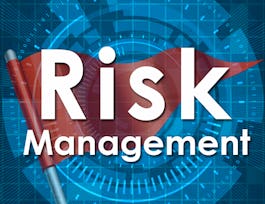The third course in this Specialization introduces you to the factors that influence how effective boards of directors will be in carrying out their roles and responsibilities and hence the impact they have in shaping the success of the organization they govern. While this course has been developed with North American culture in mind, we do appreciate that, in other parts of the world, the nature of the factors that influence the effectiveness of nonprofit boards of directors may vary. Nevertheless,it is our hope that much of the course content will still be of value to those in other parts of the world.


The Factors that Influence the Effectiveness of Boards and the Governance Process
This course is part of Improving Leadership & Governance in Nonprofit Organizations Specialization
Taught in English
Some content may not be translated


Instructors: Prof. Yvonne Cafik Harrison, PhD
5,708 already enrolled
Included with 
Course
(49 reviews)
Details to know

Add to your LinkedIn profile
7 quizzes
Course
(49 reviews)
See how employees at top companies are mastering in-demand skills

Build your subject-matter expertise
- Learn new concepts from industry experts
- Gain a foundational understanding of a subject or tool
- Develop job-relevant skills with hands-on projects
- Earn a shareable career certificate


Earn a career certificate
Add this credential to your LinkedIn profile, resume, or CV
Share it on social media and in your performance review

There are 5 modules in this course
Hello and welcome to Course 3 in the series of courses on Improving Leadership and Governance in Nonprofit Organizations! The focus of this course is on the often unrecognized influences on how well a board carries out its governance role and responsibilities. The goal of the first week is to address several important questions related to two key influences on board behavior: the board’s operating procedures and structures and board meetings. Some of the key questions we will explore this week are: What factors influence the effectiveness of nonprofit boards of directors? What are board procedures and structures and why are they important? What issues challenge the effectiveness of board meetings? What can be done to increase governance effectiveness? These questions form the basis of the video lecture and content in Chapters 6 and 7 of our SUNY Open Textbook, Guidelines for Improving the Effectiveness of Boards of Directors of Nonprofit Organizations. We look forward to helping you learn more about some of the factors that influence leadership and governance effectiveness this week!
What's included
8 videos8 readings1 quiz
Hello and welcome to Week 2 of the third course on Improving Leadership and Governance in Nonprofit Organizations! The focus this week is on one of the most difficult challenges to board performance--creating the ideal mix of board members and training them so that they can be as effective as possible. Some of the key questions we will explore this week are: What do we mean by board composition and development and why is it important? Why is it difficult to change the composition of the board? How do you design the ideal mix of board members? How do you locate and recruit the best new board members? What are the best ways to orient and develop board members? Is your board socially and functionally inclusive? These two influences form the basis of the video lecture, special guest interview, and content in Chapter 8 of the SUNY Open Textbook, Guidelines for Improving the Effectiveness of Boards of Directors of Nonprofit Organizations. We look forward to helping you learn about another factor that may influence the leadership and governance of nonprofit organizations this week!
What's included
4 videos6 readings1 quiz
Hello and welcome to Week 3 of the third course on Improving Leadership and Governance in Nonprofit Organizations! The goal of this week is to address important questions related to two influences that empirical research suggests are difficult to change in boards of nonprofit organizations—the informal culture and leadership of the board (Harrison and Murray, 2014). Some of the key questions we will explore this week are: What is “culture” and why is it important? What shapes board cultures and can you intentionally change them? What is leadership in the organizational and governance context? What do effective leaders involved in nonprofit governance do? Why are some leaders ineffective? How can leadership be managed for effectiveness? These two influences form the basis of the video lecture and content in Chapter 9 and 10 of the SUNY Open Textbook, Guidelines for Improving the Effectiveness of Boards of Directors of Nonprofit Organizations. We look forward to helping you learn about two more factors that may influence the leadership and governance of nonprofit organizations this week!
What's included
4 videos6 readings1 quiz
Hello and welcome to Week 4! The goal of this week is to assess course learning. The end of Course 3 assessment of learning begins with the requirement that you to take two Readiness Assurance Tests (RATs) and submit your Board Effectiveness Assessment Reflection (BEAR). During the testing process, don't forget to make a note of your answers to the RAT and RAT Application Exercise questions. You will need them to vote and discuss your responses in the RAT forums next week.
What's included
2 quizzes1 peer review
Hello, and Welcome to Week 5! The goal of this week is to discuss and complete the end of Course 2 assessment of learning. It begins with peer discussion of the individual Readiness Assurance Test (RAT) and RAT Application Exercise (case) you took last week plus peer review of the three BEAR assignments you have been assigned to evaluate this week. It concludes with re-taking the RAT and RAT Application Exercise Tests and returning the three BEAR assignments you peer-reviewed last week.
What's included
2 videos1 reading2 quizzes
Instructors


Recommended if you're interested in Leadership and Management

The Hong Kong University of Science and Technology

The State University of New York
Why people choose Coursera for their career




Learner reviews
Showing 3 of 49
49 reviews
- 5 stars
75.51%
- 4 stars
12.24%
- 3 stars
10.20%
- 2 stars
0%
- 1 star
2.04%
New to Leadership and Management? Start here.

Open new doors with Coursera Plus
Unlimited access to 7,000+ world-class courses, hands-on projects, and job-ready certificate programs - all included in your subscription
Advance your career with an online degree
Earn a degree from world-class universities - 100% online
Join over 3,400 global companies that choose Coursera for Business
Upskill your employees to excel in the digital economy
Frequently asked questions
Access to lectures and assignments depends on your type of enrollment. If you take a course in audit mode, you will be able to see most course materials for free. To access graded assignments and to earn a Certificate, you will need to purchase the Certificate experience, during or after your audit. If you don't see the audit option:
The course may not offer an audit option. You can try a Free Trial instead, or apply for Financial Aid.
The course may offer 'Full Course, No Certificate' instead. This option lets you see all course materials, submit required assessments, and get a final grade. This also means that you will not be able to purchase a Certificate experience.
When you enroll in the course, you get access to all of the courses in the Specialization, and you earn a certificate when you complete the work. Your electronic Certificate will be added to your Accomplishments page - from there, you can print your Certificate or add it to your LinkedIn profile. If you only want to read and view the course content, you can audit the course for free.
If you subscribed, you get a 7-day free trial during which you can cancel at no penalty. After that, we don’t give refunds, but you can cancel your subscription at any time. See our full refund policy.





